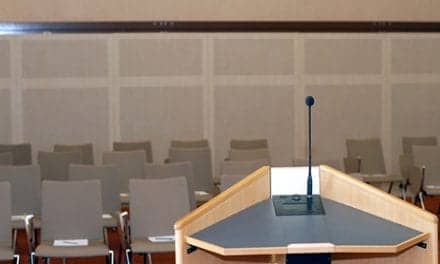 Walter Reed Army Medical Center has been the premier facility to treat wounded war veterans, but when it shuts down the new Walter Reed in Bethesda will take over, in September 2011.
Walter Reed Army Medical Center has been the premier facility to treat wounded war veterans, but when it shuts down the new Walter Reed in Bethesda will take over, in September 2011.
Included in a staff of about 45 employees moving to the new center are occupational therapists, physical therapists, psychiatrists, prosthetics, nurse care managers, social workers, and traumatic brain injury specialists.
Amputees will have a large fitness center for physical therapy, an area for occupational therapy, an indoor swimming pool, and a prosthetics lab double in size.
David Oliveria, deputy chief of staff for Facilities at Bethesda, says patients with limb loss or nerve damage will re-learn "how to turn on a light switch, open a door, turn on a faucet." Adjacent to occupational therapy is the "Daily Living Room," a mini living area with a dishwasher, stove, sink and a full bathroom. "This is where someone who may have a disability now comes to learn to live in a non-ADA (American with Disabilities) world," he said.
At any given time there are about 100 amputees engaged in rehab. About 1,200 wounded warriors have suffered major limb loss since December of 2001, and more than 245 have gone back to active duty.
Chuck Scoville, chief of amputee patient care at Walter Reed, uses technology such as a Computer Animated Rehabilitative Environment. The million-dollar gadget was built in the Netherlands and there are only five of them in use in the U.S., all at military installations.
The CAREN system incorporates a number of technologies to create a virtual environment for the patient. On a treadmill-like platform, they can learn how to run, walk, water ski, sail or even ride a motorcycle. The patient is strapped into a harness, steps on a platform that goes up and down three feet while wide screens surround them.
More than $70 million worth of equipment will be transferred from Walter Reed to the new Walter Reed Bethesda. A $1 million treadmill has forced plates embedded into it, which helps teach amputees with new prosthetics to walk more comfortably on a grade. Other gadgets include a solo step, which is a running track with a harness over it. It helps teach amputees to re-learn how to walk, run, even skate board. Amputees will also have access to a tread wall and climbing wall, which will help build strength.
[Source: WTOP.com]




